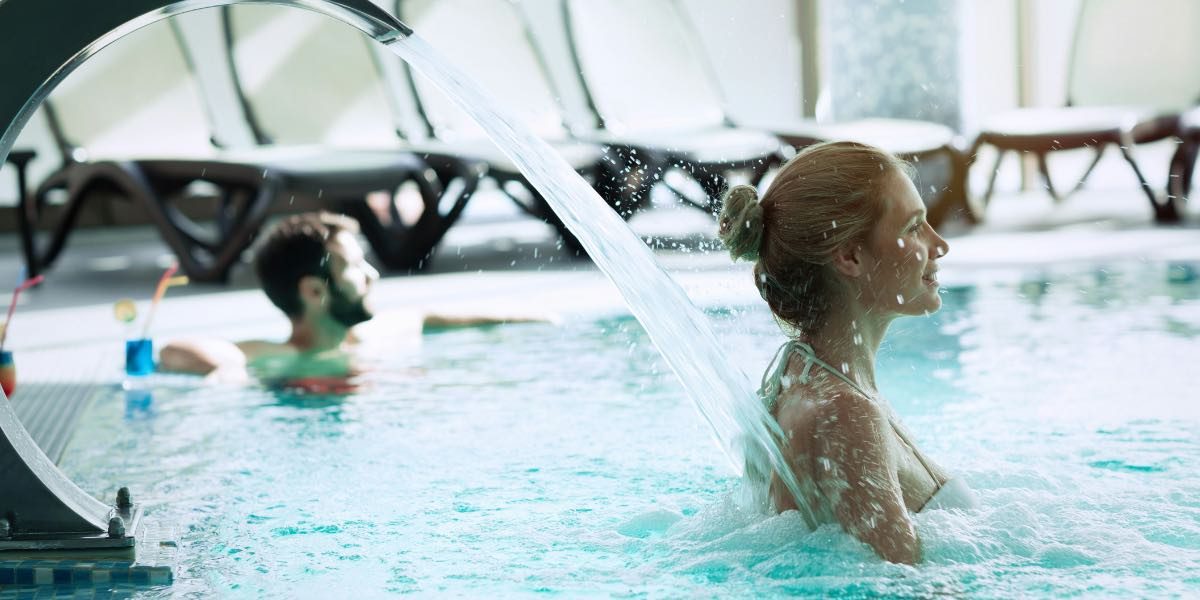The expansion of wellness tourism has led to an increased interest in travel experiences centered around relaxation and self-care. As travelers seek alternatives to traditional vacations, destinations offering structured wellness programs have gained attention. Silent retreats and hydrotherapy are two approaches that reflect this shift, each providing different ways for individuals to engage with mindful rest and physical renewal.
The appeal of wellness-focused travel varies based on personal preferences and expectations. Some travelers prioritize immersive experiences in natural settings, while others seek structured programs that incorporate guided practices. As destinations continue to develop wellness offerings, silent retreats and hydrotherapy remain notable elements of this growing sector.
Read also: Mental Wellness: The Benefits of Sunrise and Sunset Walks
How Are Silent Retreats Shaping Wellness Travel?
Silent retreats have become a recognized part of wellness-focused travel, offering structured environments where participants limit verbal communication and reduce digital engagement. These retreats emphasize quiet contemplation, mindfulness practices, and a break from external distractions.
Retreats of this nature often follow structured schedules, incorporating guided meditation, reflective walks, and mindfulness exercises. While some programs maintain complete silence, others allow for limited communication during instructional sessions. The settings vary, ranging from monastic centers to dedicated wellness resorts, each offering different levels of structure and engagement.
Silent retreats have been linked to the broader interest in intentional rest, where travelers seek periods of quiet reflection as part of their wellness experiences. The duration of these retreats differs, with some lasting a few days and others spanning several weeks. The structure of each retreat depends on the philosophy guiding the program, with some emphasizing traditional meditation techniques and others incorporating contemporary wellness approaches.
How Does Hydrotherapy Fit into Wellness Tourism?
Water-based therapies have long been associated with relaxation and restoration, with different cultural traditions incorporating hydrotherapy into wellness practices. In modern wellness tourism, hydrotherapy includes a range of experiences, from natural hot springs to structured spa treatments.
Thermal water destinations have become part of wellness travel, particularly in regions known for their geothermal features. Locations such as Japan, Hungary, and Iceland have longstanding traditions of public bathhouses and thermal pools, where visitors can experience mineral-rich waters in both natural and developed settings.
Beyond natural hot springs, hydrotherapy also encompasses structured treatments such as hydro-massage, contrast therapy, and aquatic movement sessions. Some wellness resorts have integrated hydrotherapy circuits that involve alternating warm and cool water immersion, steam treatments, and relaxation pools. The structured nature of these treatments allows travelers to engage with water-based wellness in different formats, depending on the destination and individual preferences.
What Factors Are Driving Interest in Structured Wellness Travel?
The growth of structured wellness programs reflects a shift in how some travelers approach self-care. Destinations that offer dedicated wellness experiences provide an alternative to traditional leisure travel, appealing to those who seek specific forms of relaxation, mindfulness, or physical renewal.
Silent retreats and hydrotherapy represent two approaches that align with this trend. Silent retreats emphasize mental stillness, reduced external stimulation, and guided reflection, while hydrotherapy offers sensory relaxation through water-based treatments and natural environments. Both experiences provide structured settings where participants engage with wellness practices in a focused manner.
Travelers seeking these experiences may consider factors such as location, program length, and activity structure when selecting wellness-focused destinations. Some programs are designed to provide solitude and introspection, while others emphasize community-based engagement with wellness practices. As wellness tourism continues to evolve, destinations may adapt their offerings to reflect a wider range of preferences.
How Are Destinations Expanding Wellness Tourism Offerings?
Destinations focused on wellness tourism continue to explore ways to expand their offerings by integrating different wellness practices into their travel experiences. Some resorts and retreat centers have incorporated silent meditation programs alongside other mindfulness-based activities, providing a broader selection of experiences within the same location.
Wellness facilities that specialize in hydrotherapy may also include additional water-based treatments, such as floating therapy, sauna rituals, or marine-based relaxation techniques. In some regions, hydrotherapy is offered as part of a larger spa or wellness retreat, where visitors can access multiple types of relaxation and therapeutic treatments within one setting.
The growing interest in sustainability within wellness tourism has also influenced how destinations approach wellness-focused travel. Some silent retreats and hydrotherapy locations emphasize eco-conscious practices, incorporating locally sourced materials, renewable energy, and environmentally mindful water management systems. These considerations align with broader trends in responsible travel, where visitors seek experiences that integrate well-being with environmental awareness.
Read also: Travel Influencers: Unseen Power in Tourism Trends
What Trends Are Emerging in Wellness Tourism?
As wellness travel continues to grow, new trends are emerging that reflect shifts in traveler preferences and industry offerings. Some wellness programs are incorporating technology-free retreats, where participants disconnect from digital devices to engage more fully with their surroundings. Others are expanding their use of personalized wellness plans, tailoring programs to meet individual preferences.
Destinations that focus on hydrotherapy are also developing multi-sensory wellness experiences, integrating elements such as aromatherapy, sound therapy, and guided relaxation sessions alongside traditional water-based treatments. These developments indicate a broader shift toward customizable wellness experiences, where travelers can engage with relaxation practices in ways that align with their specific needs.
Silent retreats and hydrotherapy continue to be part of wellness tourism, offering structured experiences that emphasize different aspects of self-care. As wellness travel evolves, destinations may continue adapting their programs to meet changing expectations while maintaining a focus on mindful rest and rejuvenation.















